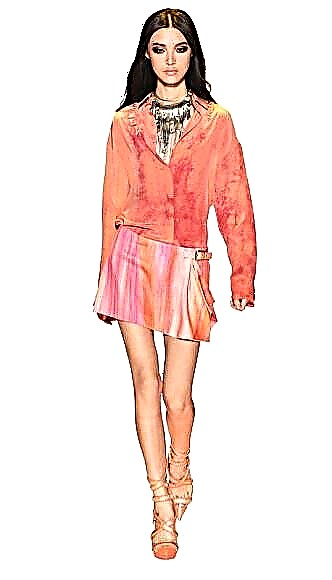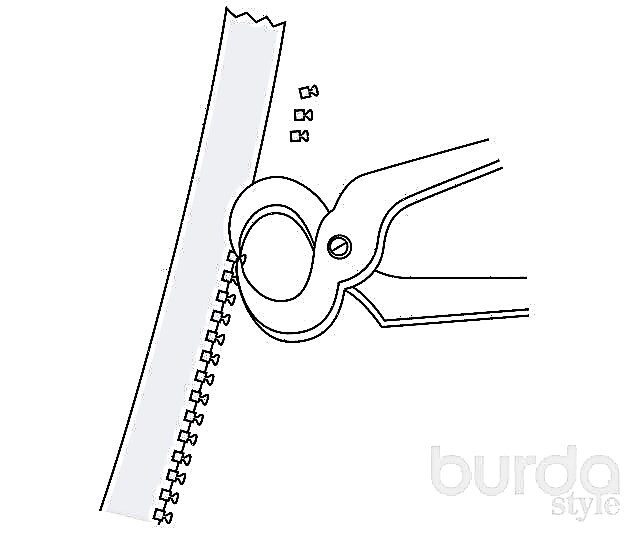The DMC line of floss with a magical shimmering glitter went on sale last year, but so far not everyone has managed to appreciate the beauty and effectiveness of these threads!

If you are fond of embroidery, you are probably familiar with the French company DMC, because it is one of the best manufacturers of cotton floss in the world. In addition to beautiful embroidery threads, DMC is also famous for other needlework products of excellent quality: from knitting yarn and canvas to scissors and organizer boxes.

Today we will take a closer look at a very special floss from DMC, called Étoile, which means "Star" in French. The name was not chosen by chance - Lurex is present in the composition of this floss, thanks to which the floss and embroidery made with its help acquire a special delicate sparkle. Photos cannot convey it fully, so be sure to try to see these threads live - we are sure they will captivate you!
Embroidery ribbons for beginners: miniature with a flower


Étoile can be purchased, like any other mouline thread, individually, but if you want to really please yourself or loved ones, you should pay attention to the gift set in a tin box, which includes not only a complete collection of all colors, but also a booklet with elegant designs in various techniques, from a cross to a smooth surface.


On the back of the booklet are all the colors of the Étoile line:

On the official DMC website, embroidery lovers will find a huge collection of free patterns (more than a thousand!) - mainly a cross, but also in many other techniques. By the way, the brand from time to time arranges collaborations with famous embroiderers who prepare author's schemes for DMC in their own unique style!
Japanese sashiko embroidery: master class
Today we’ll try the Étoile floss on one of the free DMC designs.
You will need:
- Scheme
- Fabric (medium density linen is best)
- Hoop
- Étoile Mouline thread (numbers C519, C798, C820, C995, C5200, optionally C444)
- Optional beads and monofilament

Despite the fact that the instructions for the schemes are presented in English, it is very easy to understand them without even knowing the language! Each element is marked with a Latin letter and number. The number indicates the color number on the nameplate:

A letter denotes a technique, which we will talk about further.
Step 1
First of all, we need to transfer the pattern to the fabric. You can do this in many ways, but one of the easiest ways is to translate the design using a regular tracing-paper. Keep in mind, this method is not suitable for every case, primarily because tracing paper can nevertheless stain the fabric by accident. Traces of tracing paper are easily washed, but it is better not to experiment with delicate light fabrics.
A slightly more troublesome, but also safer way is to translate a picture using a lightbox or window:

In this case, with the help of double-sided tape, you fix the printed design from the wrong side, and then with a water-soluble marker or even with a regular pencil draw the picture directly onto the fabric, revealing it and the picture using light box or sunlight.
For advanced embroiderers, there are more complex (and professional) methods, for example, the method of confusion, but this is already a topic for a separate master class.
Step 2
When there are objects in the foreground and background in our design, we always start embroidering with those that are farther away. Therefore, the first thing we will start with the sun.
The instructions for DMC patterns have a handy reminder for seams and stitches, so you don’t worry that you don’t know some techniques.The letters on the diagram will help you find the right technique. We will fill the rays of the sun with the help of straight stitch stitches:

The instructions do not mention this, since this is an optional rule, but most often before filling the element with satin stitches, the contour is sewn with a seam in a split or seam back needle, which then disappears under the main stitches. Such a contour allows you to make the edge more even, clear and slightly raised. So, for example, the seam is sewn back to the needle:

The seam into the split is just as simple: after each stitch, we put out the needle in the middle of the stitch made, as if splitting it.
The direction of the stitches will change slightly, following the bends of the rays. You can draw guide lines with a simple pencil to avoid biasing in the process.

Step 3
We embroider the rays inside the sun with simple straight stitches ...

... and outside.

Please note that the instructions suggest embroidering them with a seam back needle, but in this case, simple long stitches are perfect.
Do-it-yourself embroidery on gloves "Mimosa sprig"
Step 4
We will embroider the crescent using the technique of artistic smoothness, which can also be called the technique of short and long stitches. Perhaps this is not the most beautiful name for this technique, but it quite accurately conveys the essence of the method. In simple words, we alternate a long stitch and a short one:

We will start with a contour with a seam into a split, and we will start not with C820, but with C798 - we will sew the dark contour in the last turn. Do not forget to also sew a needle back with a seam or stitches in a split circumference of the sun.

Step 5
Please note that in our pattern, the stitches are strictly vertical, and not following the crescent bend. We begin to fill the crescent moon, following the boundaries on the diagram and maintaining strict vertical stitches. We make some stitches longer, some shorter, and do not be afraid to go beyond the color borders - moreover, you even need to go behind them!

Do not try to work with mechanical precision, making strictly one stitch shorter and the second longer, this will not directly affect the result. In general, embroidery with artistic smoothness is very similar to drawing with simple pencils (only instead of strokes we have stitches), and in this process there is an element of freedom and lightness, not a mathematical calculation of the length of stitches.

Step 6
We take С519 and continue to fill the figure, as if “pouring in”, “interfering” the colors with one another. Try not to lay the stitches on top of each other, place them side by side, but so that the base fabric does not shine between them.

Step 7
We fill the remaining space with C5200 threads.

If you suddenly distorted the figure a little or feel that in some place it would be worth adding a little more color, take one thread of the mouline thread and carefully add the stitches in the right place, making sure that they harmoniously blend into the threads surrounding them. Be careful, Étoile in one thread is much more capricious and delicate than in two - do not take a long thread, as it can break at the most inopportune moment.
Step 8
Now that the crescent is full, you will probably notice that the edges of the figure are not perfectly even.

With due care, this can be avoided, but in fact, there is nothing to worry about and such things are most often noticeable just near (and often only to you, as the author), but that is why we will embroider the final dark outline with a seam into a split on this stage - it perfectly closes all the bumps.

Create a Lilac Hummingbird brooch: a combination of embroidery and beads
Step 9
We turn to the stars. First, embroider the rays with straight stitches. Then we sew the contours of the circle in the center as a seam into the split. We fill the circle with straight stitches and, again, with simple straight stitches (or sewing a needle back), we outline the rays.

Further, we will deviate a little from the given scheme, because ready-made schemes are a great occasion for experimentation! Add a color that was not in the original instructions - C444!

Step 10
We embroider simple stars and sparkles with straight stitches or a needle back seam, and the trace of a star can be embroidered with a seam into a split.

Step 11
We embroider all the other stars in the same way: first we fill the base.

Then add the outline and details!

Step 12
In the same way, we embroider one large snowflake star.

And the second one.

Step 13
In the original pattern, sparks (they are also distant stars or, possibly, snow, as your fantasy tells you) are proposed to be embroidered with French knots.

But they can just as well be replaced with several types of beads. Sew it best with monofilament.

Our embroidery is ready! It can be left in the hoop (having previously processed the back side with the help of our master class) and used, for example, as a festive Christmas decor:

In addition, you can easily adapt the design for embroidery on interior items or even (with due dexterity) embroider a pattern on clothes!

If you embroider on clothes, the issue of washing will be more than relevant, so be careful: only hand wash at a temperature of 40 is allowedabout. You can not worry about the safety of the product: DMC floss is of high quality and never molt.
20 t-shirt handmade embroidery ideas you'll want to repeat



